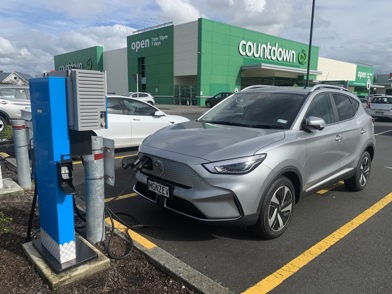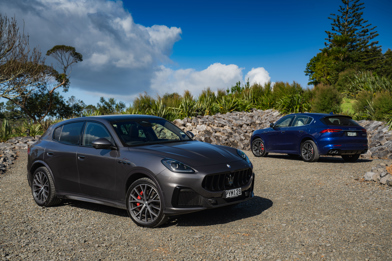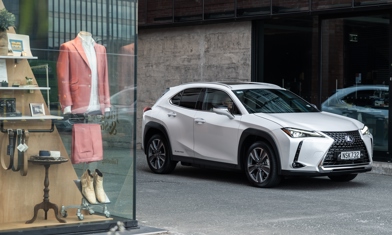MEB is really starting to make an impact in New Zealand. ME… huh? That’s Modularer E-antriebs Baukasten (okay, don’t worry), or basically the “modular electric toolkit” that provides the bits for Volkswagen Group brands like Audi (Q4 e-tron), Cupra (Born) and Skoda (Enyaq) to mass-produce battery electric vehicles (BEVs).

You could argue this is the big one: the Volkswagen ID.4. After all, it’s the parent brand, it’s the people’s brand and it should theoretically be the one that has the most to offer the broadest range of buyers. It’s a medium SUV, too, and we Kiwis love those.
It’s been a long road for VW NZ. It started talking with the factory about this car before it even had a name, back in 2018, and the rest of us have been talking about it and waiting since it was launched in Europe in 2020, through Covid-19, component shortages and overwhelming global demand.
But now it’s here, albeit in almost a one-size-has-to-fit-all specification, which is the opportunity cost of getting decent supply (which VW NZ says it has).

The ID.4 is bigger than a Cupra Born and slightly smaller than a Skoda Enyaq. Also bigger than a VW Tiguan, which might be a more meaningful comparison for potential buyers.
The biggest BEV market in NZ for the last 12 months has been $70-80k; so right up against the cap for the maximum Clean Car Discount.
Underneath it has the same 77kWh battery and rear-mounted 150kW/310Nm electric motor as its Cupra and Skoda siblings (okay, the sporty Born offers an extra 20kW boost when required). All three have virtually the same wheelbase as well, which is surprising - but just how platform sharing works sometimes.

The hardware is capable without being BEV-leading: maximum AC charging is just 11kW (no 22kW on a three-phase setup for you), while DC is a respectable but not gob-smacking 125kW (a Hyundai Ioniq 5 will go 200kW-plus on a suitable charger, for example).
Underneath it has the same 77kWh battery and rear-mounted 150kW/310Nm electric motor as its Cupra and Skoda siblings.
The biggest BEV market in NZ for the last 12 months has been $70-80k; so right up against the cap for the maximum Clean Car Discount. That’s right, as a group the more costly cars outsell even the cheapies like the BYD Atto 3 and MG ZS EV.
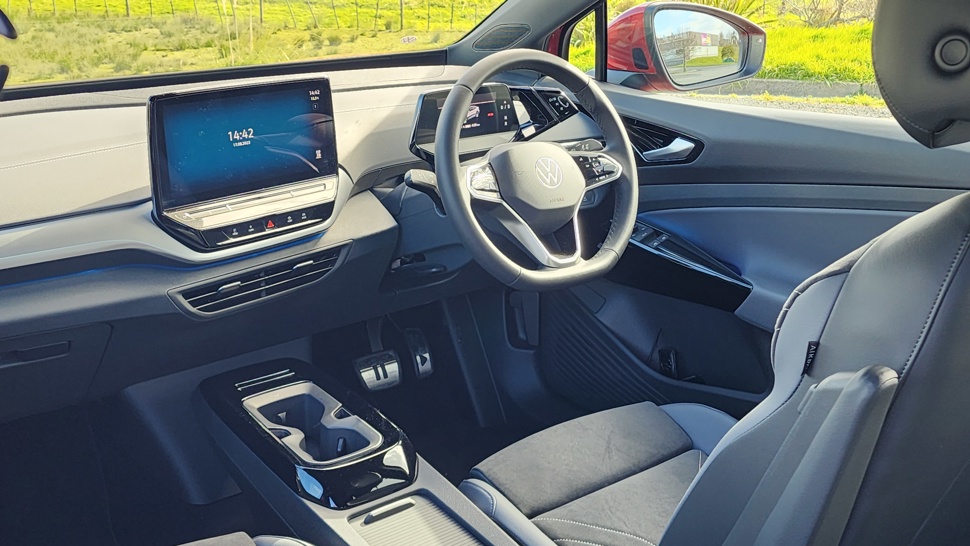
So it’s no surprise that the ID.4 Pro entry model sits at a “special driveaway price” of $79,990 for now, meaning you still get the full $7015 back from the Government. It’s still pretty well specced-up too, with the full suite of driver assists and safety gear, LED lights all-round, infotainment system with Android/Apple phone projection (cable, not wireless) and 19-inch wheels. Twist-and-go too: as long as you have the key, you can just jump in and drive. No start procedure.
What’s missing on both models, and in fact all MEB cars in NZ, is an internet connection.
That sub-$80k price is artificially – perhaps painfully for VW NZ - held down to meet the Clean Car Discount, so it’s a substantial jump to the higher-specification ID.4 Pro+. This $90,990 machine is mechanically (electrically?) unchanged, but adds fancier “IQ.Light” headlights and 3D taillights (your light show awaits), a front light bar to let the neighbours know you’ve arrived, three-zone climate air, dual-height variable boot floor (meaning a knook for storing charge cables), power front seats with massage function, larger 12-inch infotainment screen and gruntier audio.
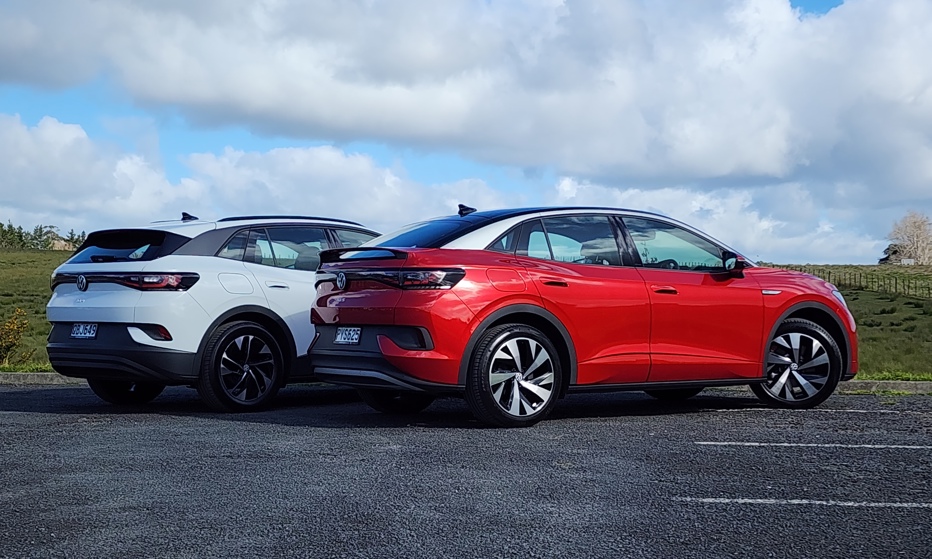
What’s missing on both models, and in fact all MEB cars in NZ, is an internet connection – no live services, like over-the-air updates or cellular-based mobile-phone apps to connect to your car. Stuff that BEV buyers are coming to expect. The back end is still being sorted apparently, and in fact VW NZ reckons ID is unlikely to offer online services of any kind in its current generation.
ID.5 is essentially a coupe-style version of the ID.4. Same Pro and Pro+ specifications.
Now seems like a good time to introduce ID.5, which is essentially a coupe-style version of the ID.4. Same Pro and Pro+ specifications, and while it’s ostensibly more expensive than the ID.4 at $86,490 and $95,490, the entry ID.5 is at a special driveaway price of $79,990 until September. No prizes for guessing why.
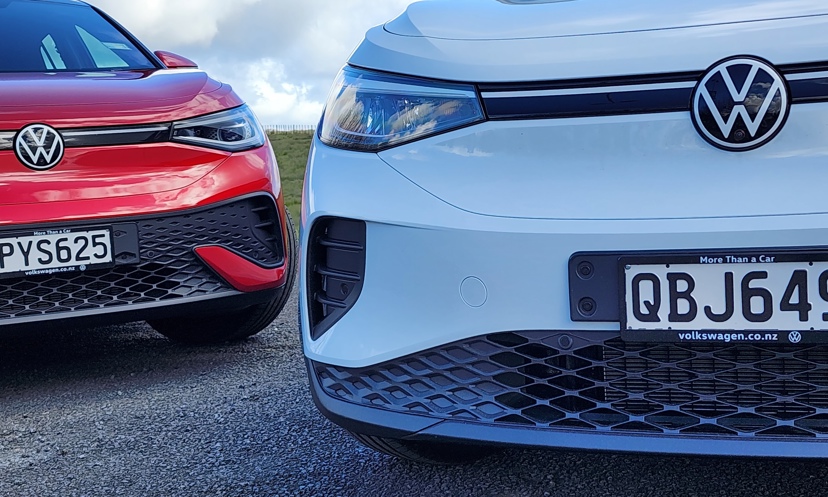
Aside from the sleeker roofline (sans rails as well), the ID.5 has a more aggressive bumper design and better aerodynamics, which in turn brings slightly better range: 530km, versus 519km for the ID.4. It’s 7mm lower to the ground and weirdly, has slightly more bootspace (549l versus 534l), partly because there’s a snip more rear overhang. But no ID.4 or ID.5 has a powered tailgate. Semiconductor shortages?
The only other major difference is that even the entry ID.5 Pro has the big 12in screen. That’s just the way the coupe is fitted out, apparently. But all tech for thought if you have $80k to spend on an ID.
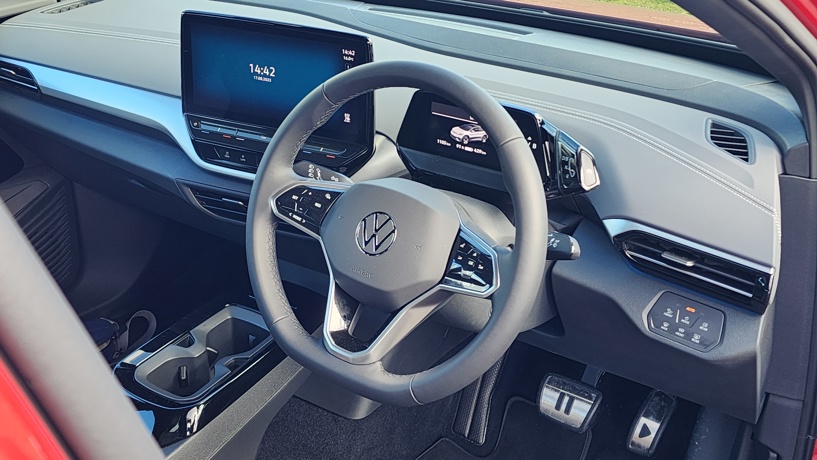
Speaking of interiors, the IDs have the full VW haptic-touch setup, like the Golf 8, which has been a touch (ha ha) controversial because it’s not terribly intuitive and major functions like audio volume and air-con temperature are slide-controls, largely unlit and generally pretty hard to operate. VW has since backpedaled on the whole concept and promised future models will bring more physical controls back into the mix, starting with the All-new Tiguan next year. And presumably the ID.4/5 facelift, although that’s not due for at least two years.
Honestly, lots of it is not ideal, but you do get used to it. The Skoda Enyaq, which retains quite a few physical buttons, is still ergonomically superior.
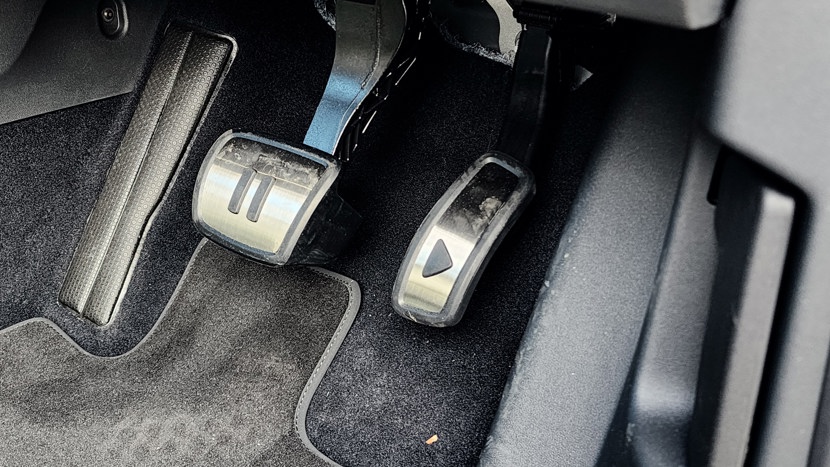
The Dub hits back with a few nice details: there’s a light bar across the base of the dash that acts as “car talk”, glowing blue, white, red or green to communicate with the occupants (blue as a welcome for example, red for emergency braking and green for charging). The infotainment OS is way less confusing than Cupra and if you want to talk physical controls, the “pause” and “play” brake/accelerator pedals are very cute.
Here’s a funny thing: after a taster drive in both ID.4 and ID.5, most of the DRIVEN Car Guide team reckon the IDs are a more entertaining drive than the Enyaq: the steering is better, the chassis more lively, the suspension better controlled.

The fear is always that BEVs feel a bit samey, and that goes double for BEVs on a shared platform; but based on first impressions on Kiwi roads, VW seems to be engineering some of those subtleties in quite nicely for its star MEB player.
There’s more to come, including the 220kW dual-motor ID.5 GTX, due before the middle of next year. And later, the smaller ID.3 (Golf-sized) and ID.2 models.
But for now, it looks like VW NZ is off to a late-but-confident start with its IDs.
An ID.4 Pro – that crucial sub-$80k model - is currently in the DRIVEN Car Guide garage for the full test treatment; we’ll report back soon.
VOLKSWAGEN ID.4 & ID.5
MOTOR: 77kWh (net) battery with single electric motor
POWER: 150kW/310Nm
GEARBOX: Single-speed automatic, RWD
CONSUMPTION: 16.5-16.9kWh/100km, range 519-530km (WLTP)
PRICE: $79,990-$95,490














